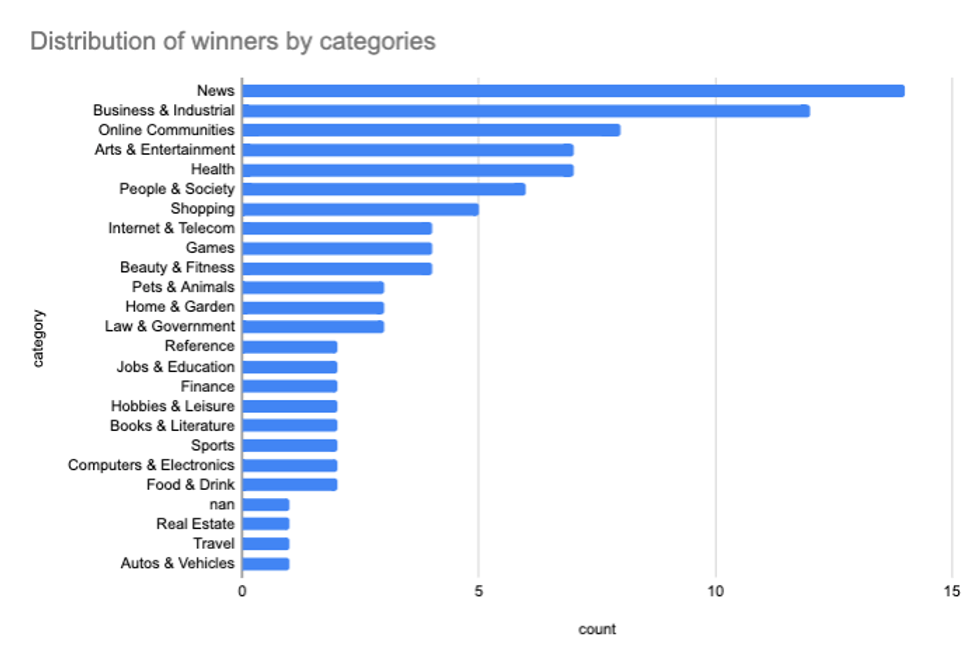
The search engine launches the first major algorithm change since the COVID-19 outbreak
Google announced a core algorithm update on May 4, 2020, the search engine's second core update of the year. The previous core update took place on January 13, 2020, before the COVID-19 global pandemic rattled the world.
Later today, we are releasing a broad core algorithm update, as we do several times per year. It is called the May… https://t.co/m3CmB1DApr— Google SearchLiaison (@Google SearchLiaison) 1588616983
On the same day as the announcement of the algorithm update, Google said that COVID-19 is the most searched-for topic over a sustained period in its history.
Google Search has never seen as many searches for a single topic continue over a sustained period as is happening n… https://t.co/m5HVCohprM— Google SearchLiaison (@Google SearchLiaison) 1588614893
May 2020 Core Update: Insights From Our Data
Thanks to the massive scale of our platform, we live close to data-driven content from media properties of all sizes. Because of this, we're often able to identify Google algorithm changes before they even happen. Since the May update, we've been analyzing the traffic of our clients to get insight into what Google has favored and not favored in this core update. Here's a quick list of our findings.
AMP Has More Weight
- The sites we power on RebelMouse that are AMP First — sometimes called canonical AMP or pure AMP — saw a very big and very immediate jump in traffic after the update. (All of our other sites have AMP-based companion pages, which is a best practice if your site can't be AMP First.)
- The sites we have access to that are not on our platform and chose to turn AMP off took heavy hits to their traffic.
- The priority toward AMP can be credited to Google's promotion of its own product.
Structured Data Matters More Than Ever
-
Structured data
is not as simple as you might have thought. The complexities go deep and it now has to be done really well. Errors in structured data will cause sites to drop off the map quickly. Here's a short checklist to make sure your structured data is set up for success:
-
Article vs. NewsArticle
- Give careful thought to these two categories, because while Google is now accepting more publishers into Google News, if you have all your evergreen content classified as NewsArticle , your indexing could suffer. It's a good idea to separate out your evergreen content from your News articles and categorize each correctly.
- We use conditionals based on sections to make sure everything is categorized correctly.
-
Video Structured Data Is Vital
- The structured data for every video must be marked correctly to have a chance to win on search.
-
List/Item Structured Data
- If your content has galleries or listicles, that content's structured data must be marked up as a ListItem .
-
Recipes
- Recipes now need to have at least two or three of these key things that were previously just warnings: reviews, cook time, prep time, ingredients, and nutrition.
- Sites that don't will be dropped off the map entirely.
- Click here to read how our editing interface can be customized to meet the special needs of recipe content.
-
"Questions and Answers" Data
- Google is now featuring "People also asked" modules, and ensuring these elements use the correct Q&A data structure is essential.
- We utilize our Poll CTAs to meet this requirement, and with some quick testing, it has shown immediate traffic improvement against the algorithm.
-
Article vs. NewsArticle
Last Modified Date and Change Frequency Are Critical
- Google messaged this pretty clearly by saying that the best movies in 2020 won't be the movies that were the best in 2011.
- Evergreen content that previously worked for years will now be challenged and recycled. It's more important than ever to update relevant content for immediate regrowth.
- We changed our sitemaps to a Changefreq of Daily. Also, with inline native comments , polls , and reviews, you can keep evergreen content alive and in a competitive state on our platform.
- Quality reviews for your business are more important than ever with this update.
The High Importance of CLS
- Cumulative Layout Shift (CLS) determines how often your users experience unexpected layout shifts or changes on a page. To ensure visual stability, you want your CLS score to be low. It's a metric that has huge significance in the latest algorithm.
- We've worked with our clients to get max heights defined for ad sizes to ensure our CLS scores are kept low .
- Adobe Fonts/Typekit seems to now result in a big CLS penalty, so consider trying an alternative if you can.
- CLS is now a part of Core Web Vitals in Google Search Console.
May 2020 Core Update: The Pandemic's Impact on Site Traffic
While Google is notoriously vague about the details of core updates, the May 2020 Core Update is unique because Google now has to catch up to how dramatically search has changed over the past five months, according to Search Engine Journal .
The massive global impact of the coronavirus has not only changed what people are searching for, but it has also shifted what content is considered relevant and useful in these unprecedented times.
Early data on the algorithm update validates these suspicions. Search Engine Journal reports that searches for travel and tourism took downward turns, while queries around remote work topics soared.
The following chart from SEMrush breaks down the "winner" categories of the May 2020 Core Update. With news taking a top spot, it's safe to assume that the coronavirus has made a massive impact on Google's algorithm.

Only time will tell how these dramatic shifts in categories, and other widespread impacts on search since the pandemic, will continue to impact Google's rankings.
May 2020 Core Update: How Do I Improve My Search Traffic?
It's important to understand what core updates mean because Google will rarely provide details on what specific changes were made to its search algorithm. The advice is always to provide quality, user-friendly content that's holistic and relevant to what searchers are seeking. This usually means adopting a human-centric approach to search engine optimization (SEO), which is commonly referred to as an E-A-T strategy:

E-A-T stands for expertise, authority, and trust. In short, it means your content should claim ultimate jurisdiction over your topic so that readers won't need to look anywhere else to feel satisfied with their search query.
Still, the advice of "Just make great content!" every time Google rolls out a massive shift like the May 2020 Core Update often leaves publishers feeling a little lost about what to do next. Marketing expert Neil Patel offered particular insights on what publishers can do to make sure their content is up to Google's current standards. Here are his three takeaways:
Refresh Old Content Frequently: Patel suggests updating old content on a regular basis, even daily, to make sure every post on your site is still relevant. This includes not just fixing broken links and updating images, but crafting entire new pieces of text and even completely rewriting an article if needed. Your posts should be detailed, but free of any fluff or irrelevant information. Keep your articles evergreen by eliminating any mention of timely dates.
Don't Have Pages With Thin Content: According to Patel, sites with thin content, or a low word count, have roughly three times higher likelihood of being affected by Google's May 2020 Core Update. For posts on in-depth topics, make sure they fully cover the topic at hand. To ensure your post length is appropriate, research similar articles that are already ranking high on the same topic. However, keep in mind that there are certain subjects that can be covered in just a few hundred words with images or media.
Avoid Duplicate Meta Tags: Make sure the majority of your posts have unique meta descriptions and tags. If every page on your site has the same meta information, Google's crawler may consider them a duplication error.
Get Ahead of Google's Unpredictable Core Updates
With each update, Google echos the advice we give to the creators who produce successful content on our CMS platform every day. We have tools such as a 404 dashboard to catch bad links, full SEO audits to determine any immediate search errors, and proprietary search technology that sets up every article for success on search.
Read more about our unique approach to SEO that helps increase search visibility with every article.















































































